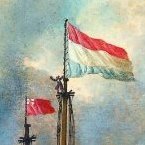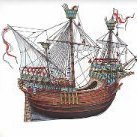-
Posts
415 -
Joined
-
Last visited
Profile Information
-
Gender
Not Telling
-
Location
USA
Recent Profile Visitors
-
 Tigersteve reacted to a post in a topic:
HM Cutter Cheerful 1806 by Erik W - 1:48 scale
Tigersteve reacted to a post in a topic:
HM Cutter Cheerful 1806 by Erik W - 1:48 scale
-
 MEDDO reacted to a post in a topic:
HM Cutter Cheerful 1806 by Erik W - 1:48 scale
MEDDO reacted to a post in a topic:
HM Cutter Cheerful 1806 by Erik W - 1:48 scale
-
 tlevine reacted to a post in a topic:
HM Cutter Cheerful 1806 by Erik W - 1:48 scale
tlevine reacted to a post in a topic:
HM Cutter Cheerful 1806 by Erik W - 1:48 scale
-
 Canute reacted to a post in a topic:
HM Cutter Cheerful 1806 by Erik W - 1:48 scale
Canute reacted to a post in a topic:
HM Cutter Cheerful 1806 by Erik W - 1:48 scale
-
 Erik W reacted to a post in a topic:
La Créole 1827 by archjofo - Scale 1/48 - French corvette
Erik W reacted to a post in a topic:
La Créole 1827 by archjofo - Scale 1/48 - French corvette
-
 Stuntflyer reacted to a post in a topic:
HM Cutter Cheerful 1806 by Erik W - 1:48 scale
Stuntflyer reacted to a post in a topic:
HM Cutter Cheerful 1806 by Erik W - 1:48 scale
-
 Stuntflyer reacted to a post in a topic:
HM Cutter Cheerful 1806 by Erik W - 1:48 scale
Stuntflyer reacted to a post in a topic:
HM Cutter Cheerful 1806 by Erik W - 1:48 scale
-
 Freebird reacted to a post in a topic:
HM Cutter Cheerful 1806 by Erik W - 1:48 scale
Freebird reacted to a post in a topic:
HM Cutter Cheerful 1806 by Erik W - 1:48 scale
-
 rcweir reacted to a post in a topic:
HM Cutter Cheerful 1806 by Erik W - 1:48 scale
rcweir reacted to a post in a topic:
HM Cutter Cheerful 1806 by Erik W - 1:48 scale
-
 davyboy reacted to a post in a topic:
HM Cutter Cheerful 1806 by Erik W - 1:48 scale
davyboy reacted to a post in a topic:
HM Cutter Cheerful 1806 by Erik W - 1:48 scale
-
 Chuck reacted to a post in a topic:
HM Cutter Cheerful 1806 by Erik W - 1:48 scale
Chuck reacted to a post in a topic:
HM Cutter Cheerful 1806 by Erik W - 1:48 scale
-
 Erik W reacted to a post in a topic:
HM Cutter Cheerful 1806 by Erik W - 1:48 scale
Erik W reacted to a post in a topic:
HM Cutter Cheerful 1806 by Erik W - 1:48 scale
-
 Erik W reacted to a post in a topic:
Sloop Speedwell by Chuck - Ketch Rigged Sloop, 1752 - POF
Erik W reacted to a post in a topic:
Sloop Speedwell by Chuck - Ketch Rigged Sloop, 1752 - POF
-
After pulling some hair out, and the remainder going gray, haha, I have finished the backstay plates and chain plates . . . on the port side anyway. I revisited blackening them, using advice here and on the internet. My test brass strips looked OK, but I couldn't avoid bare brass spots being rubbed off after lightly wiping them down with a dry cloth. I'm pretty sure I didn't clean the brass well enough beforehand. After being left frustrated by that, I just went ahead and followed what Chuck had done on his, and painted them black and used a rust brown weathering powder to give them that iron look. I'm happy with the results. A trick I learned years ago as a model railroader with brass, is to bake the brass after painting. Just put the parts under a hot halogen or incandescence light bulb, about an inch away from the bulb, for about five minutes. This hardens the paint on the metal surface and makes it much more scuff resistant. The nails themselves I ordered from ModelExpo (being my first ship build I didn't have any extras from prior builds to use). They are the smallest ones they offer. They're slightly rounded on the bottom of the heads, so don't appear the sit flush when pushed in. So I used a larger diameter drill bit than the holes in the brass were drilled with, and counter sunk all the holes in the backstay and chain plates. I also ran a sharp angled file on the underside of the heads of each nail. This helped get the nails to snug down flat when pushed in. After getting the parts mounted and nailed in place, I went ahead and touched up the paint and weathering powder. Of all the processes involved on this build, metal working is probably the one I have the least experience in. The backstay plates and chain plates have taken a lot longer than I thought they would. That said, I've learned a lot, even with the error part of Trial and Error being frustrating at times! Erik
-
 Erik W reacted to a post in a topic:
HM Cutter Cheerful 1806 by Erik W - 1:48 scale
Erik W reacted to a post in a topic:
HM Cutter Cheerful 1806 by Erik W - 1:48 scale
-
 Erik W reacted to a post in a topic:
Sloop Speedwell by Chuck - Ketch Rigged Sloop, 1752 - POF
Erik W reacted to a post in a topic:
Sloop Speedwell by Chuck - Ketch Rigged Sloop, 1752 - POF
-
 Erik W reacted to a post in a topic:
HM Cutter Alert by Thukydides - Vanguard Models - 1:64 - first build
Erik W reacted to a post in a topic:
HM Cutter Alert by Thukydides - Vanguard Models - 1:64 - first build
-
 Erik W reacted to a post in a topic:
HM Cutter Alert by Thukydides - Vanguard Models - 1:64 - first build
Erik W reacted to a post in a topic:
HM Cutter Alert by Thukydides - Vanguard Models - 1:64 - first build
-
 Erik W reacted to a post in a topic:
HM Cutter Alert by Thukydides - Vanguard Models - 1:64 - first build
Erik W reacted to a post in a topic:
HM Cutter Alert by Thukydides - Vanguard Models - 1:64 - first build
-
 Erik W reacted to a post in a topic:
HM Cutter Cheerful 1806 by Erik W - 1:48 scale
Erik W reacted to a post in a topic:
HM Cutter Cheerful 1806 by Erik W - 1:48 scale
-
 Erik W reacted to a post in a topic:
HM Cutter Cheerful 1806 by Erik W - 1:48 scale
Erik W reacted to a post in a topic:
HM Cutter Cheerful 1806 by Erik W - 1:48 scale
-
I had tested some blackening fluid on the brass I'm using and didn't really like the results. It rubbed off easily, and in general just seemed messy. Once I finish shaping all the brass chain plates I'll paint a strip of scrap brass black and play around with the weathering powders I have to see what finish I can come up with that I think looks good. Erik
-
With longer days, and warmer weather, progress has slowed down as my focus has shifted a bit to being outdoors more as spring arrives. I do still work on Cheerful daily though. I'm working on the chain plates. As with the backstay plates, I cut strips out of a 6" x 12" brass sheet. I then cut the 8 chain plates longer than needed. Next I shaped the tops of all 8. Being my first ship build, I had to do some research when I got to Chuck's instructions, "Assuming this isn't your first ship model, the angles for each chain plate were found in the usual way." Glenn (glbarlow) had some good photos in his Cheerful build log that show how to rig a temporary mast to get the desired chain plate angles. I made a jig to get the rake of the mast correct, when compared to the plans. Then I secured the mast in place with temporary fore and aft stays. The simulated shrouds are tied off at the correct height and spacing on the mast. Knowing the chain plates are not exactly the same length this process was key to do before I cut them to length and drilled the lower 2 holes on each chain plate. I have the port side chain plates finished more or less (they do still need a little tweaking). Each one is marked on the back for which position it belongs in. Erik
-
Mike, I'm glad to see you're back at it! Your build was always one of my favorites. I have the Hahn book on Ships of the American Revolution, so have always had an interest in Hahn's designs. I too know the feeling of life getting in the way of my build. Back when I took what I thought would be a short break from my Cheerful build, I had no idea it would be 6 1/2 years before I started working on it again. When we're working on something that requires such precision and concentration, it's hard to have the energy a lot of times at the end of a full and busy day. That said, I've always had the saying, action breeds motivation. Sometimes if you can just find a little energy to sit down and start, the motivation follows. Erik
- 869 replies
-
- hahn
- oliver cromwell
-
(and 1 more)
Tagged with:
-
One last photo for the week. I drilled the interior scupper holes. This was a bit nerve wracking. I hadn't anticipated how easy it would be for the 1/32" x 1/32" waterway strip to split while being drilled. I wound up starting with a much smaller drill bit and then using three more progressively larger sizes to only take a slight bit of material off at a time. I made sure to turn the pin vice really slowly. If the waterway split, the split part was still attached at one end. I took a sharpened toothpick, applied a tiny amount of wood glue, and glued the fragmented sliver back down. I had to do that with three of the holes. The splits are invisible. Glad I'm done with that part! Also, I'm not sure of the properties of wood in general, but I'm curious if my boxwood, which I've had for 9 years in an inside climate that has a humidity of around 25% most of the year, splits easier because of that. Erik
-
Thanks for the comments Glenn and Mike. My build is 100% boxwood. When I bought all the wood, and started the project back at the end of 2015, no one was really using Alaskan Yellow Cedar yet. As far as making the eye bolts, at least since I have a large amount of wire now, it's no big deal to discard the less-than-perfect ones as I get up to speed on how to make them. lol. Mike, I used a small round diamond file with the same technique you mention above. It seemed a pretty intuitive way to get the small notch filed from the hole. Erik
-
This week I decided to mix things up a bit, taking a break between making the backstay plates and the chain plates. I made the 22 eye bolts for the hull exterior and cap rail top. While I have every manner of small diameter wire - lead, brass, copper, phosphor bronze, steel - down to .002" diameter, I didn't have the type of wire best used by ship modelers for these types of things. So after some research on this forum I ordered both 24 and 22 gauge Hillman Group dark annealed wire. I must say, trying to make 22 identical eye bolts was more of a challenge than I thought it would be! I never did get to a point where they were consistent. That said, I selected groups that were close to identical to one another to fasten in the same area. I figure if the port side eye bolts are slightly different than the starboard, a viewer would never know since you only see one side of the ship at a time. I followed what Mike (Stuntflyer) had done in his Cheerful build log, and filed a little channel around the holes so the eye bolts snug down a bit. I also drilled the scupper holes in the outside of the hull. This was pretty straight forward, other than when I went to photograph the model I could see the bright wood on the inside of the bulwark. I wound up taking a fine brush and painting the interior black, followed by running a pencil around the plank edge of the hole. My next step will be to drill the scupper holes on the interior bulwark/deck area. Does anyone have any advice or wisdom on that? Am I drilling all the way through the interior planking? I know I need to make the holes so they notch into the lip of the waterway at deck level. Erik
-
Hey Allan, Thanks for the links to the McMaster site. I always appreciate good sources for materials. I did some testing with blackening the brass with Birchwood Casey blackening fluid on a scrap piece of brass. I'll most likely go with black paint and a weathering powder as Chuck did to give it that metal look. The copper/liver of sulfur you mentioned sounds intriguing. Erik
-
A little bit of progress this week. I'm new at metal working, so it took some trial and error to figure out how I am going to make the backstay plates and chain plates. One of the main issues to getting the ball rolling was figuring out how I was going to make these without the availability of 1/64" x 3/32" brass strip. It would appear that K & S has discontinued nearly its entire line of brass strip, and I couldn't locate any of the size I needed in my internet search. Many years ago I had bought a package of various sizes of 6" x 12" brass shim stock (used to shim the plates when molding parts in plastic injection molding machines so that they align correctly) just in case I ever needed sheet brass. These sheets came in thickness of .001", .0015", .002", .003", .004", .005", .006", .007", .008", .010", .012", and .015". The .015" thickness is the decimal measurement of 1/64". So I have my material. I used a pair of ancient tin snips I have in my toolbox to cut 3/32" wide strips off the sheet. I then had to flatten the strips since they curled both along the face and the edge. Next I filed the sharp edges flat. Then used flat pliers to eliminate the lengthwise cupping caused in cutting the strips off the sheet. Now that I had my self-made strips ready, I then shaped the backstay plates following Chuck's instructions in his monograph. Since the strips I created were rough and with blemishes, I polished the finished backstay plates with a fine file after shaping was complete, just because I'm a perfectionist, and that's how I roll! Yes, I know they'll be painted black. Haha. Erik
-
Not a ton of progress this week. I did finish fashioning and installing the boarding ladders and channels though. I must say ripping the boards by hand out of sheet stock to make these parts is a bit of a pain in the rear. lol. Also, it was tough getting the pattern cut into the scraper to make the boarding ladder profile. I think my limitation there was my lack of precise small files. I deliberately made the filed notches in the channels that will house the chainplates narrower than they'll be. I just wanted to get the notches placed correctly and the angles in, according to the plans. I'll finish the notches up when I fit and attach the chainplates. And lastly, I'm patting myself on the back. My third photo below manages to capture the elusive and hard to photograph lower step of the Cheerful's boarding ladder (located on the wale and painted black). Haha! Erik
About us
Modelshipworld - Advancing Ship Modeling through Research
SSL Secured
Your security is important for us so this Website is SSL-Secured
NRG Mailing Address
Nautical Research Guild
237 South Lincoln Street
Westmont IL, 60559-1917
Model Ship World ® and the MSW logo are Registered Trademarks, and belong to the Nautical Research Guild (United States Patent and Trademark Office: No. 6,929,264 & No. 6,929,274, registered Dec. 20, 2022)
Helpful Links
About the NRG
If you enjoy building ship models that are historically accurate as well as beautiful, then The Nautical Research Guild (NRG) is just right for you.
The Guild is a non-profit educational organization whose mission is to “Advance Ship Modeling Through Research”. We provide support to our members in their efforts to raise the quality of their model ships.
The Nautical Research Guild has published our world-renowned quarterly magazine, The Nautical Research Journal, since 1955. The pages of the Journal are full of articles by accomplished ship modelers who show you how they create those exquisite details on their models, and by maritime historians who show you the correct details to build. The Journal is available in both print and digital editions. Go to the NRG web site (www.thenrg.org) to download a complimentary digital copy of the Journal. The NRG also publishes plan sets, books and compilations of back issues of the Journal and the former Ships in Scale and Model Ship Builder magazines.








.thumb.jpeg.ffac2f8a24d212961a83eab4efb06a6c.jpeg)
